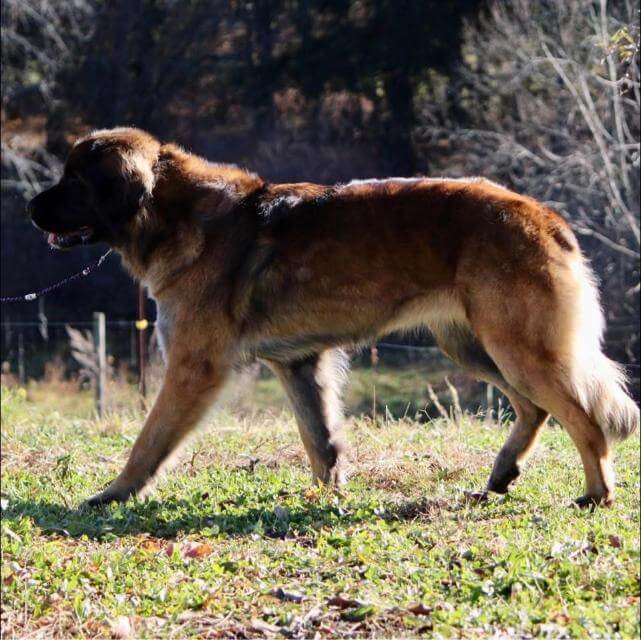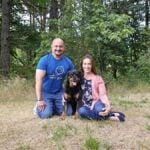


Home » A Rookie’s Look at the Leonberger
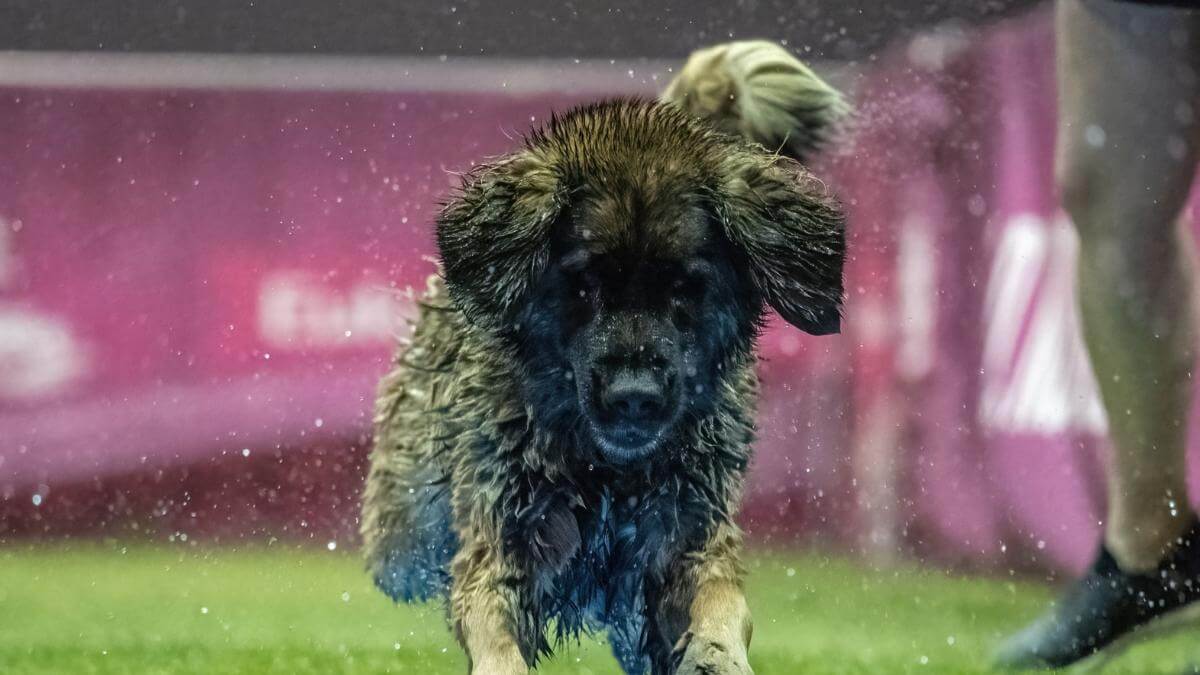
My name is Megan Currier and I have Invictus Leonbergers in Massachusetts. As a kid, I attended a vocational high school (Norfolk County Agricultural High School) where I majored in canine science and was able to work with various animals to advance my skills. I have since returned a couple times to help educate students. I was asked to discuss my life as an alumnus and my work in the canine industry. I explained to students what makes a Service Dog, and the key differences between Service Dogs, Therapy Dogs, and Emotional Support Dogs. I also discussed the importance of education when starting a breeding program, and how getting out there to watch dog shows and performance events was a huge help during the beginning of the journey. And although I’m a new breeder, I’m not new to being involved in ethical breed preservation work. I’ve worked with dogs/horses my whole life and actually became more deeply involved with purebreds over a decade ago when I got my horse, Raven, who is an endangered Cheval Canadien.
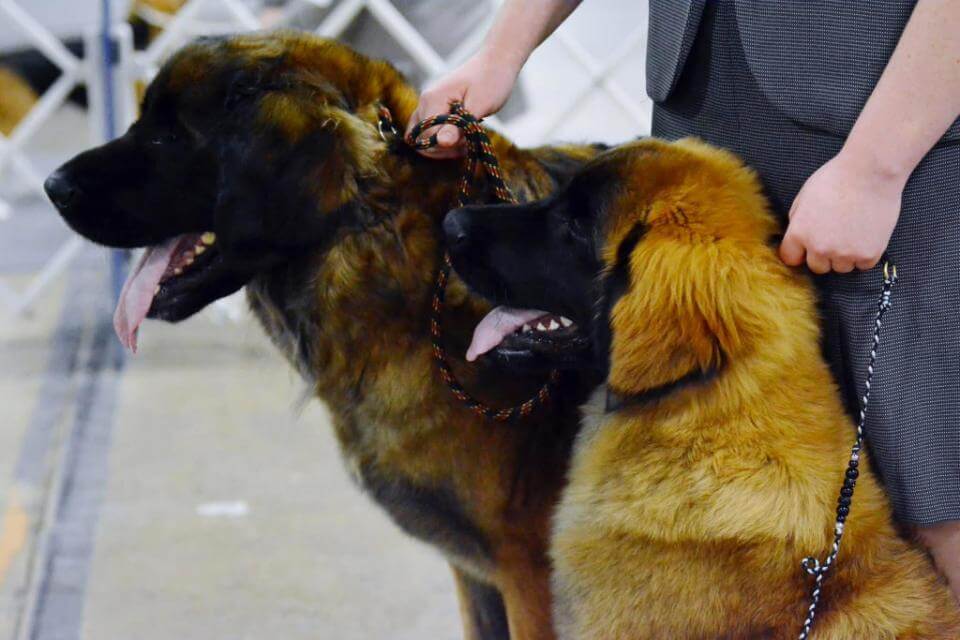
I was introduced to the Leonberger six years ago via a training client. I was hooked. What stood out to me was the breed’s natural aura, brains, and aesthetics. Then, five years ago, I got my first Leonberger, Nike, with the intent to start my involvement in the sport. Nike attended the AKC National Championship in Orlando in 2023 and was invited to the Fast CAT Invitational where she came in second place for the breed! She also titled in Dock Diving and placed Select at the National Championship. She (some days) was doing multiple things in one day. We’d show, and then immediately go to the dock, and then to Fast CAT. I absolutely love that about the breed. They will work for you. Nike is also a fully-trained Medical Alert Service Dog for me.
I produced my first litter last spring and kept Corvus from that litter. I do a bit of everything with my dogs and I train/show with good friends too. I’m always looking to add more knowledge to my brain. I think everybody has something to offer. It’s super-important to be open-minded. You can always learn something new. I’m a huge advocate for the breed, and volunteer where I can. I am a regular with the AKC Meet the Breeds in New York City. It’s something I look forward to every January. It’s an excellent chance to showcase the breed to the public. We have a designated “cuddle carpet” on which we invite people to come and snuggle our dogs. Creating stable dogs with work ethic and confidence, as well as having good conformation and chasing longevity, is my philosophy.
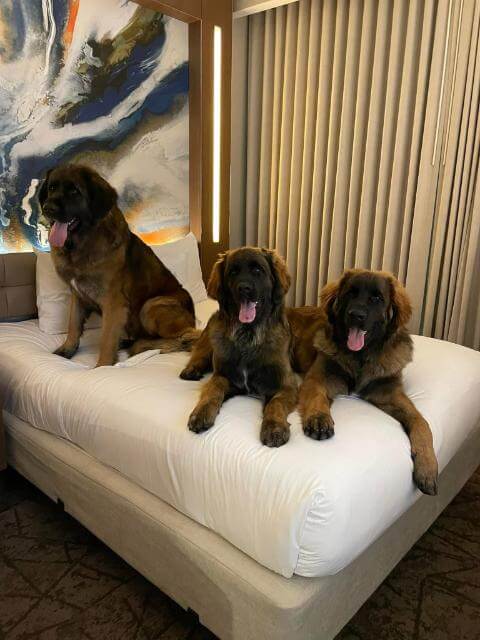
A mayor, Heinrich Essig, created the breed in 1846, as a means to have a dog that resembled the lion on the crest of Leonberg. The breed’s initial purpose was simply to exist. The dogs were then used for draft work in wartime and on farms. World War II caused a mass culling of the breed, and it became critically endangered. However, diligent breeders have since brought the Leonberger back from the brink.
Kind, elegant, and strong are just a few words that come to mind when describing the Leonberger. This is a dimorphic breed, which means males and females should be unmistakably masculine or feminine, based upon appearance alone. One big difference is the males have the classic “mane” while females do not. Males are generally larger than females too; however, this shouldn’t affect workability.
Leonbergers come in four colors, all variations of sandy, red, reddish-brown/dark mahogany, and lion-yellow, accompanied by a strong, black mask. Their coat may have black tips, but black cannot be the base color. They can have white on their toes, but it must not extend past them, as well as white on the chest that does not exceed five inches in width. The Leonberger’s coat should be left natural, with zero sculpting of any kind. You can trim the feet, which should be strong and tight, much like cat feet.
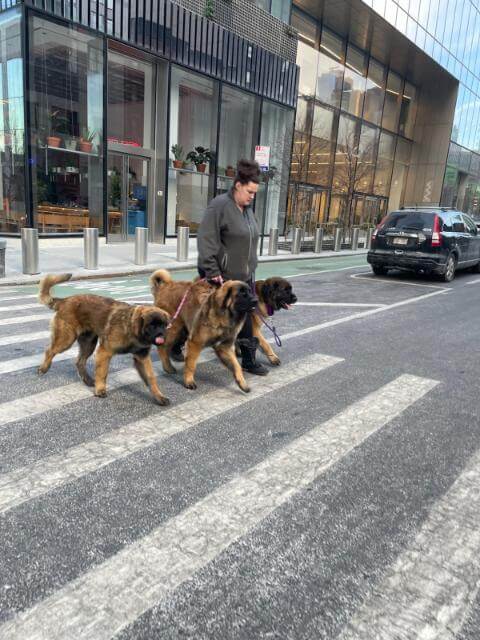
This is an expression/movement breed. Expression must be “good-natured, soft, and intelligent,” while movement is “ground-covering, even, and balanced.” There’s no mistaking the movement of these powerful dogs. It separates them from most giant breeds. Leonbergers are versatile and athletic. They are incredible dogs. They can hike with you for five miles, and keep up, although it’s so important to practice good exercise regimens with them. They are game to do whatever you want to do. They love to work for and please their people. I go trail riding with mine on horseback.
My dogs can hike for hours. If you allow them to sit around and be lazy, they absolutely will be. They adore working, though. They’re happier to have a job. They can do just about anything, from Therapy Dog work (they excel here) to Service Dog work, Draft, Dock Diving, Agility, Rally Obedience, Fast CAT, and much more!
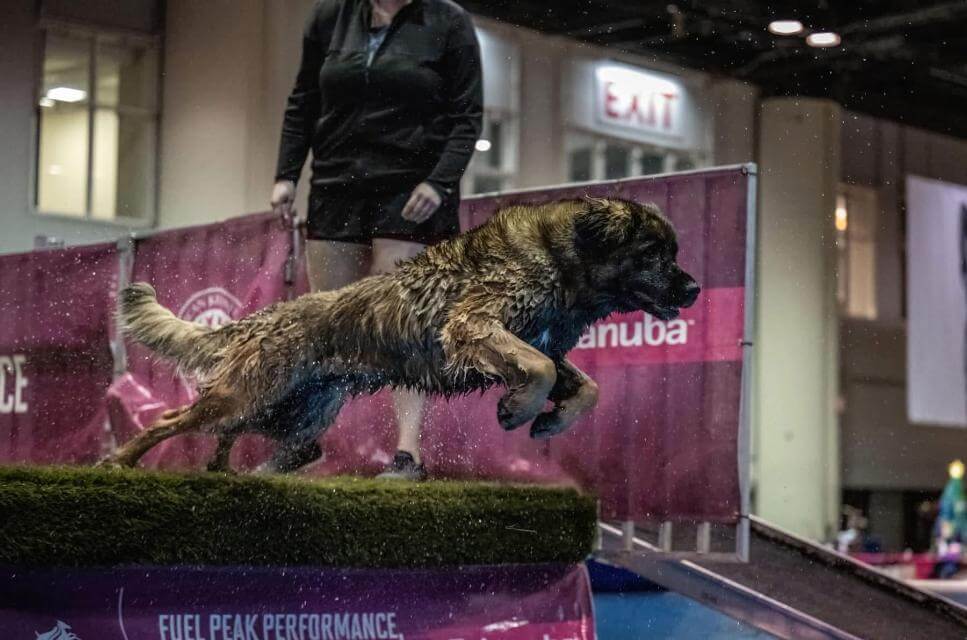
Leonbergers do not drool! We usually say, “More shed, less drool.” They should not drool like a Newfoundland or Saint Bernard. They blow their coat two times a year—before spring and then again before winter—and you can actually make yarn from their hair! It’s best to have a good slicker, greyhound comb, and a good forced air dryer to help the coat during the drop periods.
Another thing that is important is their classic Leonberger temperament. Although many people mistake them as guardian dogs, they do not have the instinct to guard like a guardian breed would. They are supposed to be neutral with others, so it’s important for people to know what is expected in a Leonberger. This is derived right from the AKC Breed Standard:
“The gentle character and even temperament of the Leonberger is of utmost importance for fulfilling their role as a family companion. The Leonberger is confident, with a steady, playful demeanor. The breed is willing to please and possesses a good capacity for learning.”
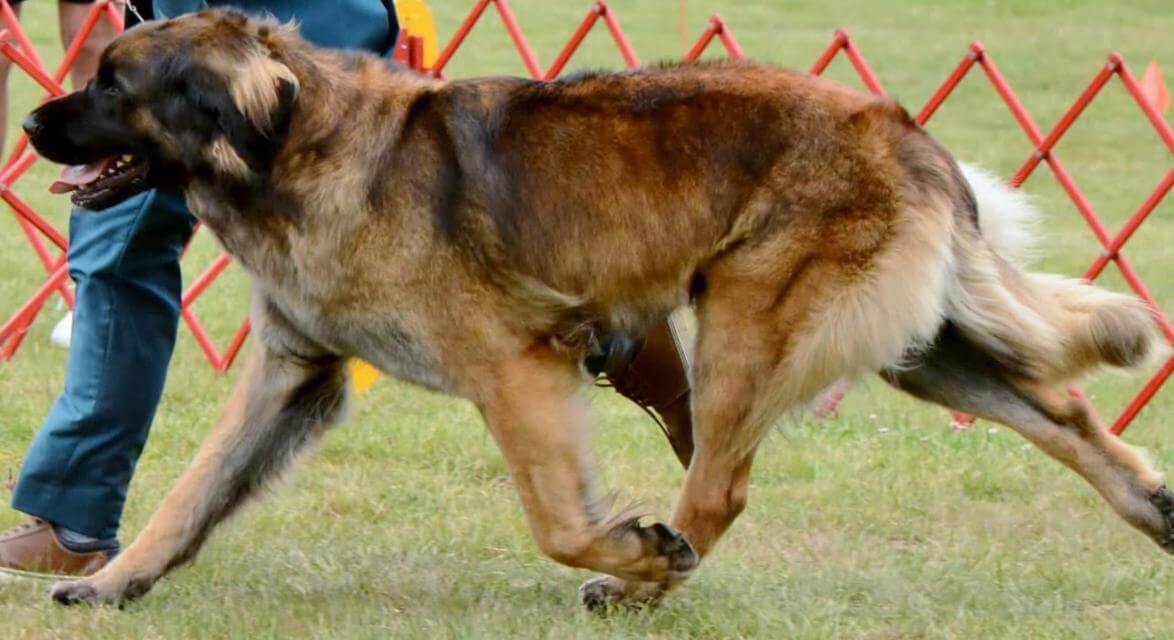
Temperament is so important for this breed. Aggression should not be found in them. They should be able to mingle with each other, even just passing by. It cannot be stressed enough how important this is. People (and judges) need to understand the importance of the true, proper temperament for the Leonberger.
Disqualifications include: any coat color other than those listed; white extending beyond the parameters described on the chest and toes; complete lack of mask; and more than one missing tooth other than M3s. The faults (which can vary) include any deviation from the standard, minor, serious, or major, determined by two factors: severity and impact.
The Leonberger is quite eye-catching. However, if you want one, be prepared to be stopped by everybody! Another important thing to note is vetting breeders, making sure they are following good ethics/practices, health test their breeding dogs, will take back the dogs they’ve bred at any time during their lifetime, and more. Don’t be afraid to ask a hundred questions.
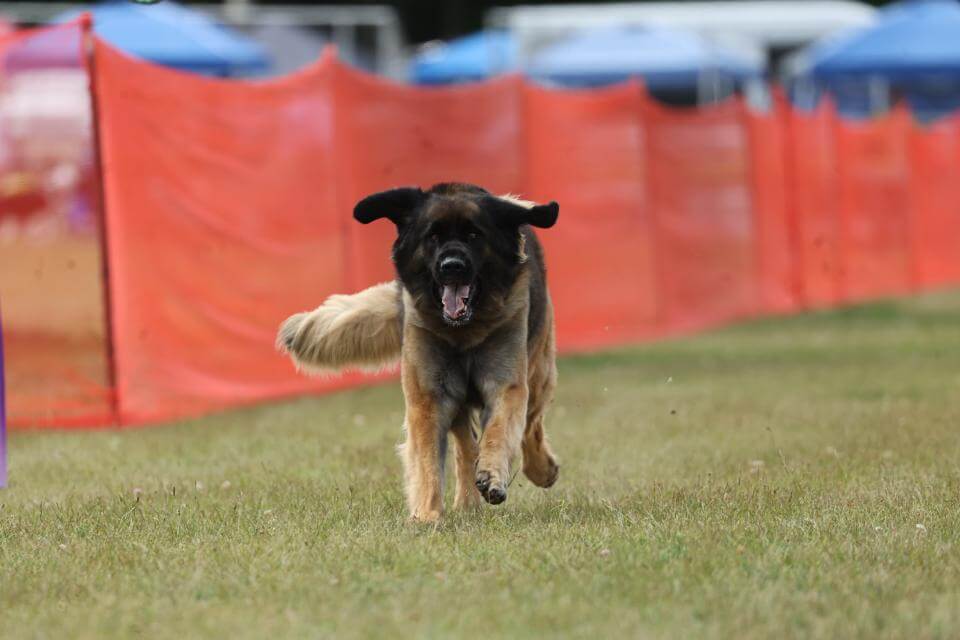
A good breeder will not care how much you ask them about their program. It is also standard practice to be on a waitlist, for one, two, or even three years. You’ll want to wait for this breed. The Leonberger Club of America has a breeders list with the names of breeders who have to get CHIC numbers (all required health testing recorded with the Orthopedic Foundation of Animals) on all of their breeding dogs in order to be included.
I cannot say enough great things about this breed. But be forewarned, you must have a sense of humor in order to own them. They will keep you on your toes, and lift your mood. It’s a privilege to be able to share my home with them, and educate the public on how stellar the breed is. My life has changed for the better because they exist, and many Leonberger people would agree!
